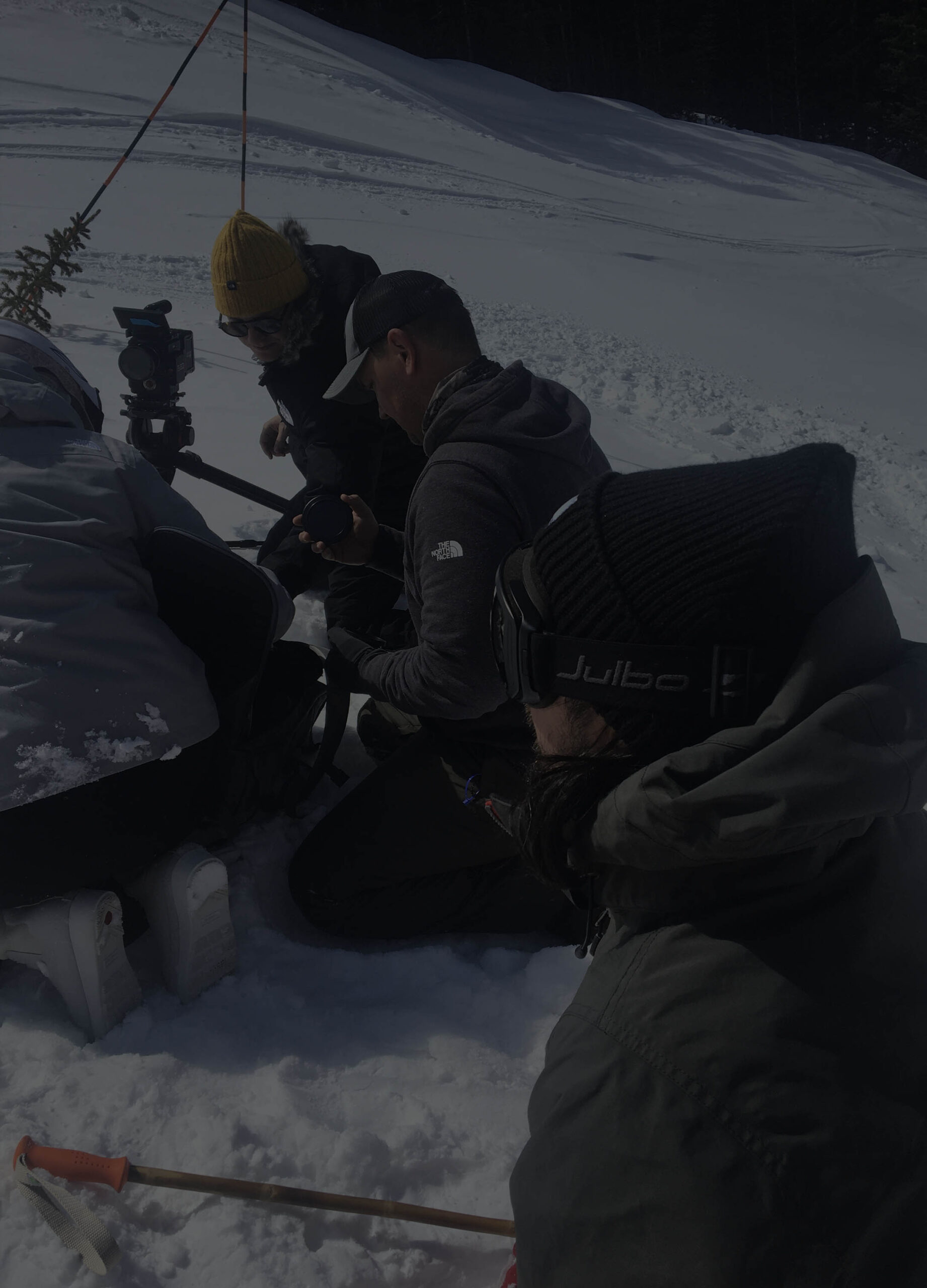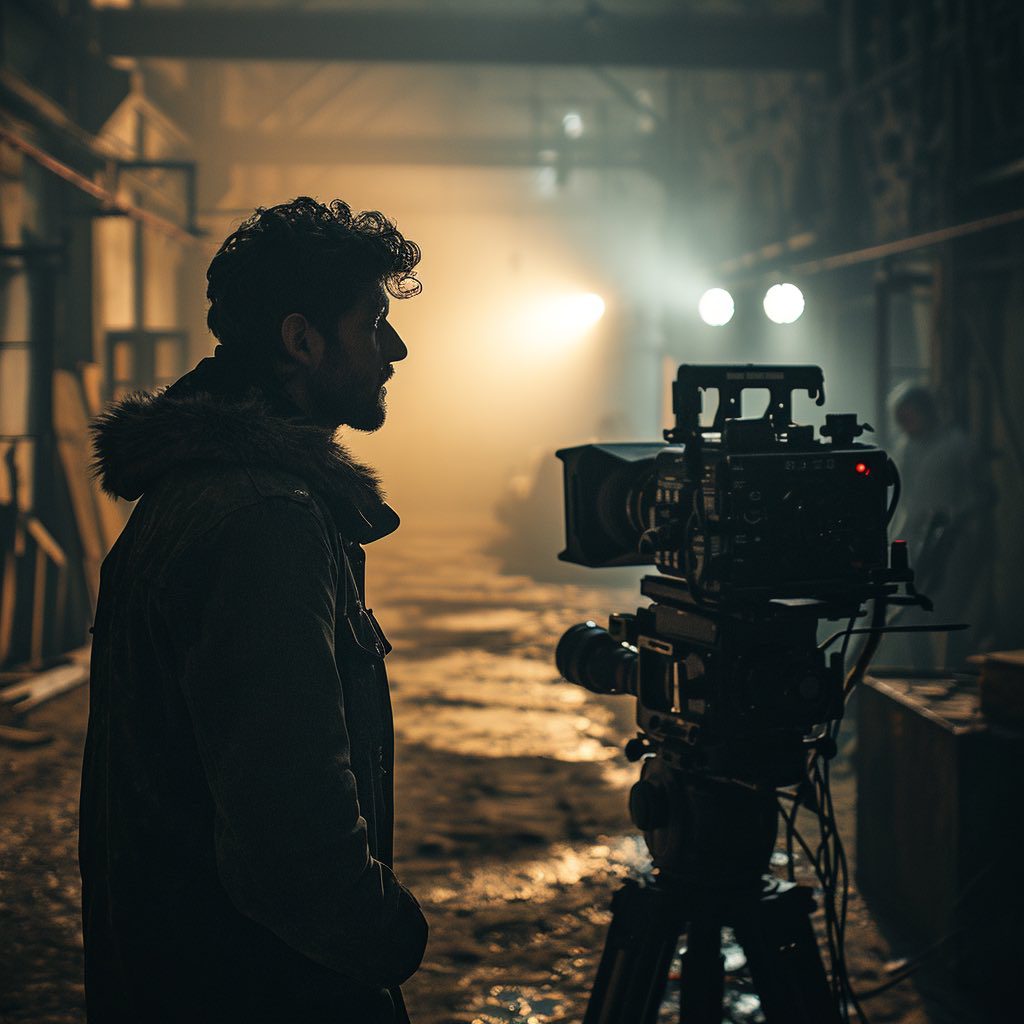Learning the Slopes – Skiing and Filming
I had the opportunity to DP a project for Meiers’ Skis as a part of House of Sticks’ production company. This project was a bit scrappy because we worked with...

I had the opportunity to DP a project for Meiers’ Skis as a part of House of Sticks’ production company. This project was a bit scrappy because we worked with a small budget and we had to figure out a lot of things while on set. As a result, there are things I would do differently and things I would repeat that made it a success. Overall, I feel the team at House of Sticks would agree that with a bigger budget and time, we would change our process to help us achieve an even better result with ease.
WITH A BIGGER BUDGET AND MORE TIME
Months leading up to the shoot, I helped director Scott Stickane develop the spot idea and create a storyboard. We wanted to compare the making of skis to the process of skiing. We couldn’t scout the location of the shop or the slopes beforehand. This made planning a challenge because we didn’t know what elements of skiing on the slopes for ski-making in the shop we could film or what would look good due to weather, lighting, and framing. We came up with vague ideas of ski movements that connected to parts of the ski-making process we knew about. Shooting week, we tried to capture the best elements, keeping in mind our storyboard, trying to match framing in the shop with the skier’s movements on the slopes. Our previously created shot-list served as inspiration.
If we were to do this project over again, it would help to either fly out early to scout the locations beforehand or do a video walkthrough of the ski shop and communicate with a ski guide about ski movements and where to capture them on the mountain. That way, we could rely more heavily on our shot-list and plan ahead of time. Making the connections while shooting and fitting the footage together afterward proved difficult.
We also wished we had spent a day scouting slope locations on skis without camera gear before shooting. There were plenty of fun trails to ski but not as many that looked good on camera. Not to mention, it is a lot harder to film on certain slopes than others due to incline and access. We ended up landing a couple of great locations, but it took us a while to find them, time that we could have spent filming. I learned that sometimes the locations that looked best on camera are not necessarily the most fun for the skier. If we had the ability, I also would now suggest sectioning off parts of the mountain for shooting and traveling in sleds with walkies.
WHAT I COULD DO BETTER
I personally learned a couple of important lessons about communication. With scrappiness comes a constant change in vision and I should have communicated with the director better throughout the process. Lighting in the shop was done by trial and error. We settled on great lighting for each shot but I was always a bit unsure when setting up. This unsureness did not help the director, Scott’s, confidence in me as a cinematographer. Next time, I will communicate beforehand with the director about their lighting vision and know that if we can’t plan, then it is okay to experiment. I was so afraid of making a mistake, that my decision hesitation caused longer set up times. I also learned that I need to communicate my limitations. I am an amateur skier but I wanted to carry my weight. However, the first day on the slopes, I took more gear in my pack than I could handle while on skis. I packed my gear well but with a couple of slips on some icy steep terrain, I broke the screen accessory on my camera. I should have communicated beforehand about my abilities and had someone else take the camera to the filming locations. Instead, this posed a greater challenge and limited the control I had on cameras during the skiing portion. It is always best to lower others’ expectations before shooting and then exceed them on set.
WHAT I DID WELL
There were some things I did well that I will continue to practice. The first is to constantly shoot. Except for shoots where shot lists are extensive and time is tight, I find that the director always appreciates extra footage. This said, it is important to get their permission. We used a lot of footage grabbed last minute because of Scott’s suggestion or mine in the final edit. There is usually always something unexpectedly brilliant that happens on set and it is important to be ready to capture it. I also learned that sometimes less is more. We didn’t take a lot of lights on set and it made the shop shots shine. Many of our shots, we backlit with a punchy light, filled with a big light, and occasionally added shape with a battery-operated light to the side. This lighting made the process of making skis in the shop feel intimate on camera and allowed us as crew to move from one set up to the other quickly.
GRATITUDE
Overall, I am thankful to have worked on this project. I learned about myself as a filmmaker and how to film a ski video successfully. Planning adds to a crew member’s confidence on set. However, I learned that it is okay to experiment and take risks; this doesn’t mean someone is less talented. I constantly remind myself that some of the greatest shots happened because of experimentation. While I would do some things differently, I like how the final project turned out and I hope I get to film a video like this again in the future.
A FINAL NOTE
We also shot a couple of close ups of the skis weeks after the shoot in a garage. This allowed us to focus on storytelling on set and focus on product shots when we had the space and time. In this article I just spoke about my experience filming in Colorado.


